The status bar on the bottom of the screen indicates Energy, Missiles, and global metroids remaining.
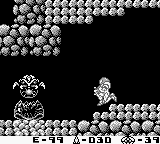
Notice the metroid leaves behind its shell as it mutates. These shells often serve as warnings, letting you know to switch over to missiles because a metroid lurks nearby.
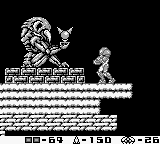
Like the first game, weapon and suit upgrades are usually found near Chozo Statues. Unlike the first game, however, the statue may not be holding it.
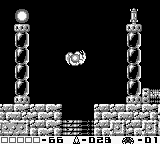
Energy spheres and missile batteries restore all health and ammo respectively, and they're strategically placed to facilitate speed running for the best ending.
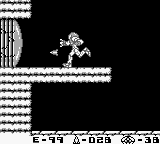
Because the Gameboy is in monochrone, the few doors there are require missiles to open. They're usually found in ancient ruins, and they usually lead to power ups.

Don't bother with Spazer or Plasma Beam because of this enemy right here. The Wave Beam's zig-zag path makes hitting these armored bastards much easier.
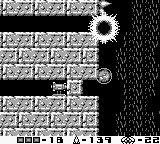
You actually start out with the morph ball in Metroid II, and between Springball, Spiderball, and bombs, you almost never need to come out of ball form at all.
Review by Jay Wilson Let’s talk about immersion—becoming so engaged with a video game that you’re no longer controlling an abstract onscreen avatar, rather have fully projected yourself into the game world. It’s a highly subjective phenomenon because we respond differently to different combinations of game elements, and like suspension of disbelief, it only takes one standout component—not even a flaw, necessarily—to shatter the illusion. For me, while I can engage plot, puzzles, and action, I don’t really become immersed in it. For me, immersion happens with exploration. I need a setting rich with atmosphere, loaded with things to do, and ripe with secrets because there’s no satisfaction in searching a lot of emptiness to find nothing. I also need a protagonist capable of dealing with the game’s challenges and surviving for prolonged periods of time because dying thirty-seven times at the same spot shifts your focus from looking around to just staying alive. Finally, I need a compelling reason to set off on the journey, and the simpler the better because complications take up valuable game time and exponentially increase the likelihood of insurmountable plot holes and unbearably unsympathetic characters. That sounds like a lot, but essentially it boils down to: 1 something to explore, 2 the ability to explore it, and 3 please shut up and let me explore it. That’s it. Of all the games I’ve played, Metroid II: The Return of Samus is probably the most immersive. The premise is simple: you’re on a planet; go kill all the metroids. That’s pretty much all it gives you when you start a new game. What’s a metroid? Don’t worry. The game lets you know with a sudden music spike and brief introductory animation where it mutates into the more powerful Alpha variant. One thing it does not tell you, however, is to switch over to missiles when fighting one. Not directly anyway. It does let you know your beam isn’t doing anything as each direct hit is accompanied by the unmistakable clunk, clunk, clunking sound of futility. And Nintendo wisely puts the first metroid a short distance away with obstacles that teach you to shoot up, shoot down, shoot while crouching, and use the morph ball. Along the way, the observant player will notice a missile icon and counter, yet bounty hunter Samus Aran fires a beam with infinite ammo. The experimenting player will find the Select button that opens up Samus’ arm cannon. And the deductive player will realize that since missiles have limited shots and the regular beam does not, those must be for something special like, say, killing the thing that has its own boss music and seems impervious to everything else. If not, you die. And Nintendo clearly expects you to die the first time out. That’s why they put the initial metroid so close. That’s why they put a save point even closer. Come back, try again. Keep trying until you figure it out. This is the training area. It’s teaching you to look for your own answers, to try things, and to be self-reliant because our protagonist is on this planet alone and she has to be self-reliant. It’s also teaching you to trust the game’s feedback. Metroid II will organically let you know if you’re making progress and if you’re doing something wrong so you can make logical deductions and achieve that self-reliance. When you finally do hit the Alpha Metroid with a missile, it recoils and screeches in pain, and there’s no doubt that you’ve hurt it. And now that you know how to hurt it, you can kill it. With the fall of the first metroid, the player is then introduced to the energy sphere and missile battery which restores all health and ammunition respectively. And these items are clearly visible while the path to them is hidden, cleverly encouraging exploration and experimentation because now you know solid walls are not always what they seem. There are secrets, and at the end of those secrets are rewards. Reinforcing this notion: when you acquire the bombs, in the very same room is a missile pack under the floor in plain sight. “Hey, why don’t you try out that thing you just got?” A bit further on you fall down a deep well to get the Spiderball. How do you get out? “If only you could climb walls like a certain notorious arachnid ...” But what’s interesting is the game never explicitly tells you how to use these items. It trusts that by granting a new powerup, displaying its name, and immediately providing an obvious challenge designed for said powerup, you’ll try the Gameboy’s four buttons and d-pad until you figured it out on your own. And if stumped, as a last resort you could always turn to the ancient and long forgotten technology known as the instruction manual. It’s like a tutorial that doesn’t interrupt your game. Metroid II effectively combines linear and non-linear gameplay by using lava and earthquakes to logically and organically open up planet SR388’s non-linear underworld one piece at a time even if the triggers for said earthquakes (SR388-quakes?) require a bit of suspension of disbelief. Gameplay wise, this restricts you from areas you’re not ready for, and by that I am not referring to habitats of powerful enemies who can insta-kill Samus with a sneeze. There’s also the more potent danger of boredom from hitting dead end after dead end after bloody dead end because you don’t have the bombs to get past this wall, or the high jump boots to reach that ledge, or the spiderball to make it up this cliff, or the space jump to get past those spikes. One of the immersion-breaking flaws of the first Metroid was it immediately opened up to a world of locked doors, out of reach items, and an overabundance of completely pointless paths. The lava in The Return of Samus functions as a guide to keep you in areas where you can actually do something meaningful. And you know what? Inside that area, you are free to go anywhere you want, collect or skip the powerups as you please, and hunt down the metroids in any order you wish. You can even go back to previously explored areas and try to dig up items you missed. Let me be clear though, the lava does not keep you from getting lost. Metroid II notoriously does not have a map, and with the Gameboy’s limitations the individual rooms, corridors, and shafts within each individual region can look very, very similar. Plus the Spiderball is literally the second upgrade you find, meaning for 90% of the game you have walls and ceilings to search and keep track of as well. The lava just lets you know you still have metroids to kill and serves as a beacon, so when you do feel the next tectonic shift, you know where to go to find the next passageway. The Metroid series in general also successfully combines two seemingly opposed philosophies of game design. The first being the common sense notion that you get better with practice, which technically exists in all games but is much more prominent in action games. The second being the static stat increases commonly found in turn-based RPGs. Metroid plays mostly with action and platforming sensibilities where you have to familiarize yourself with the environments, enemy placement, and enemy behavior and also hone your reflexes to jump, dodge, and shoot to survive. This takes practice. You can’t just camp next to a spawning well and farm XP until you level up. But Return of Samus goes further by providing a powerup known as Space Jump, allowing Samus to stay airborne indefinitely. However, there’s an art to Space Jumping. You don’t just mindlessly turn it on and float. You have to actively sustain it by finding the right rhythm and timing to your button presses, and that timing changes depending on whether you’re doing huge arcing long jumps or semi-steady rapid short jumps. You can even switch back and forth at will to not only navigate the challenges specifically designed for it but also to avoid obstacles, enemies, and safely bypass entire caverns you’ve already explored and don’t feel like screwing with again. It makes you faster, more efficient, and more effective, rewarding you for taking the time to master it. And then the game rewards you again by giving you Screw Attack, which lets you kill enemies by jumping through them, meaning perpetual Space Jumping becomes easier because you no longer have to dodge enemies. You can aim for them. But at the same time Metroid does offer RPG-like stat boosts in the form of Energy Tanks, the Varia Suit, Beam Upgrades, and Missile Packs, allowing Samus to take and deal more damage, which in turn allows her to go even longer without recharging her weapons and health. Everyone has faced the ominous choice of doubling back to a distant restore point in relative safety or pushing forward into the unknown and risk stumbling into the next boss fight before finding the health and ammo needed to survive it. And that’s really what the extra energy and missiles are for. While the metroid mutations do get progressively more powerful, they don’t scale with Samus’ power. You can get by with two energy tanks and recharge after every Zeta or Omega metroid, but if you find all five (there’s actually six, but like Metroid 1, you only get functionality out of the first few) the Zetas and Omegas not only become that much easier, but you can face them back to back. Missiles are the same way. When I originally fought the Metroid Queen, I just barely had enough to kill her. I could not afford to miss. But you know what? I went back, I looked around, and I found enough missiles to provide a comfortable buffer. These days I don’t even bother getting them all because a couple are so far out of the way they’re not worth the time investment. But that’s not the game discouraging exploration. That’s me choosing not to pursue something I’ve already discovered.
Metroid II actually does a few things better than Super Metroid such as not having a save animation.
What really inspred me to get Return of Samus was a TV Commercial featuring a brief clip of the Metroid Queen battle. It's one of the very few times I acquired a game without knowing anything about it.
If you beat the Metroid games within a certain time limit, you can see Samus sans suit. They call them endings, but they're really post-credits extras.
On the aesthetics side, I like how large and detailed Samus’ sprite is even though it does cause minor issues with the Gameboy’s 160X144 resolution. You’re so zoomed in on Samus that you’ll often run or jump into enemies just off screen because by the time they do appear it’s too late to react. I like how Metroid II leaves behind the Space Pirates entirely and moves on with a natural progression from the first game’s scenario: exterminating the creature the Space Pirates tried to weaponize. I like that there’s no unique bosses, just a handful of permutations of the same species. And I really like how the titular Metroid isn’t an intelligent being scheming to take over the galaxy. Like the Alien from which it takes its inspiration, the Metroid has no ambitions, lusts, or dreams. It’s a primal creature governed by survival instinct that evolution just happened to shape into a potent predator. If left alone, it would stay on its home world and not threaten anybody. Who knows, it might even render itself extinct by killing off all sustainable prey. And of special note is Metroid II’s sound design. It brilliantly takes a minimalist approach that not only accommodates the Gameboy’s limited capabilities, but it uses sound to inform the player and facilitated gameplay. Music is used sparingly, most notably in the main passageway that connects all the areas together and leads back to Samus’ ship. If you’ve spent a week or two searching through an area for metroids, you might not remember your way back. But as soon as you hear the upbeat overworld music, you know you’ve hit the right path. You can follow the ascending tunnels to make it back to your ship, or you can find a point to descend and more than likely find the next metroid nest. Most of the other areas feature ambient sound effects—abstract bleeps and blips that are surprisingly effective at evoking water dripping, critters crawling, and a thriving ecosystem. As much as I love Super Metroid’s phenomenal soundtrack (and wouldn’t change a thing about that game), I find myself more immersed in Metroid II’s SR388 if nothing else for that one extra bit of verisimilitude. You just don’t have theme music in every single place you go. And not having music for long stretches of the game makes the handful of places that do have music more special. One touch in particular I admire is how the lair of the Omega Metroids features a deep note that echoes over what sounds like footsteps, and you come upon three tunnels, one of which leads to the Metroid Queen. And Metroid II informs you that you’ve taken the correct path by changing (seamlessly if you’re not paying attention) to very similar music with low moans over the very same footsteps except now it has an eerie high pitched leitmotif of something sinister lurking. And the final encounter becomes almost cinematic. The music pulsates and swells like a doomsday siren as you Space Jump across a floor and ceiling covered in spikes to a chasm leading to the Metroid Queen. You drop down. The screen flashes white. And the Queen emerges, filling up half the screen and roaring before attacking with jaws big enough to swallow Samus whole. It feels like a final battle. It feels epic. Now, I may get more immersed in Metroid II’s world, but Metroid 3 is by far the better game. However, I don’t think it would have been half of what it is had Nintendo not made this game first. There’s something about working with minimums and tight technical constraints that lets you really shine when given the proper resources. The Return of Samus is a great game by any standard, and an amazing accomplishment on a very limited system. So, I’m not surprised that Super Metroid on infinitely better hardware is nothing short of an absolute masterpiece. | |||||||||||||||

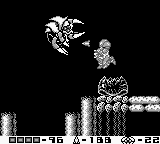
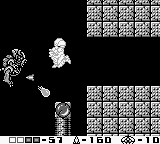
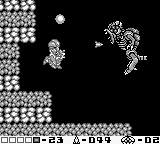


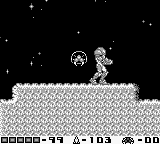 | |||||||||||||||
|
| |||||||||||||||
